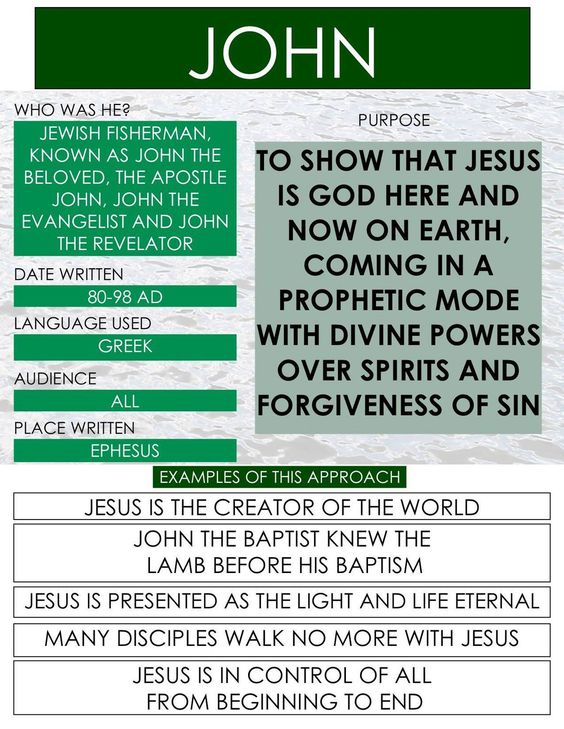One of the most popular Bible verse in the Gospel of John is John 3:16:
“For God so loved the world, that he gave his only Son, that whoever believes in him should not perish but have eternal life.”
This verse encapsulates the central message of the Christian faith, emphasizing God’s love for humanity and the gift of salvation through faith in Jesus Christ. It is widely known and frequently cited as a summary of the gospel message.
The Book of John (PDF download)
An Overview
The Gospel of John is one of the four canonical gospels in the New Testament of the Bible. It stands out among the gospels for its unique theological perspective, profound teachings about Jesus Christ, and emphasis on the divinity of Jesus. Here’s an introduction to the Gospel of John:
- Authorship: While the author does not identify himself explicitly, early Christian tradition attributes the Gospel of John to the Apostle John, the beloved disciple of Jesus. The author refers to himself as the disciple “whom Jesus loved” but does not mention his name directly.
- Purpose: The Gospel of John was written with a clear theological purpose: to present Jesus Christ as the divine Son of God who came to earth to reveal the Father and provide salvation to humanity. John emphasizes the significance of belief in Jesus for eternal life and seeks to strengthen the faith of his readers.
- Audience: John’s gospel was likely written for a diverse audience of Jewish and Gentile believers, as well as those who were seeking to understand the identity and significance of Jesus Christ. John addresses theological questions and presents Jesus’ teachings in a way that resonates with both Jewish and Hellenistic thought.
Themes
- The Divinity of Jesus: John’s gospel begins with a majestic prologue affirming the preexistence and divine nature of Jesus Christ as the Word (Logos) who was with God and was God. Throughout the gospel, John presents Jesus performing miracles, delivering profound discourses, and asserting his divine authority.
- Salvation and Eternal Life: John emphasizes the central importance of faith in Jesus Christ for salvation and eternal life. He portrays Jesus as the source of abundant life and the only way to reconciliation with God.
- Light and Darkness: John frequently uses the imagery of light and darkness to symbolize the contrast between the truth of Jesus’ teachings and the spiritual blindness of those who reject him.
- The New Covenant: John highlights Jesus’ role as the fulfillment of Old Testament prophecies and the establishment of a new covenant between God and humanity, based on grace, truth, and love.
Structure
The Gospel of John is structured around seven “signs” or miracles performed by Jesus, each of which reveals aspects of his identity and mission. These signs are interspersed with discourses and teachings that expound on the significance of Jesus’ ministry.
Key Passages
The Gospel of John contains several famous passages, including:
- The Prologue (John 1:1-18)
- The Wedding at Cana (John 2:1-11)
- The Bread of Life Discourse (John 6)
- The Farewell Discourses (John 14-17)
- The High Priestly Prayer (John 17)
In summary, the Gospel of John offers a profound theological reflection on the person and work of Jesus Christ, inviting readers to encounter the living Word of God and believe in him as the source of eternal life and salvation.

